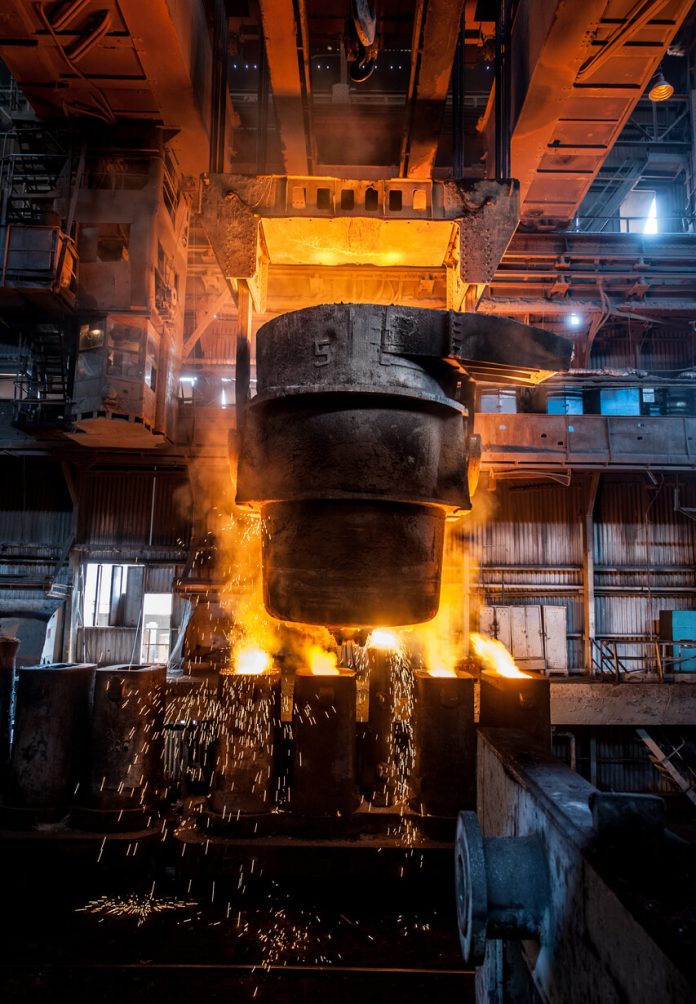The iron age began in 1200 BC and meant production was common. The discovery of copper in 5000 BC meant the stone age era was complete and the Copper era had begun. Then the invention of bronze, an alloy of tin and copper, set up the Bronze age.
Ferrous Metals
The word “Ferrous” originated from the Latin word Ferrum because it contains iron. The way to check if a metal is Ferrous is to check for its magnetic properties. Ferrous metals have high tensile strength, which means they can withstand while being stretched or pulled without breaking. This makes them an ideal material to use in construction.
Most forms of steel or iron are considered Ferrous metals. Metals like steel and iron can have elements from other materials added into but only small amounts. Metals like steel have copper added to it, this increases corrosion resistance. Then adding nickel to steel increases the toughness and strength. However, the small amounts of metals being added doesn’t change the composition of steel into a non-ferrous metal but only Alloy steel.
Common Ferrous Metals
Carbon Steel has higher carbon content than other types of metal. Carbon steel is an important factor to construction. Many of the tallest buildings in the world use carbon steel. It is commonly used in the making of machine tools, blades, drills, springs, and taps.
Engineering Steel has other elements added into like nickel, titanium, and chromium to help with strength and durability without making it heavier. Engineering steel is made using chromium. Engineering steels are mainly used in construction.
Cast Iron is an alloy made from caron, iron and silicon. Cast iron is hard and resistant to wear, making it ideal for water pipes, stoves, automobile engines and machine tools.
Wrought Iron is an alloy with little carbon content making it almost pure iron. When being manufactured, slag is added to it, this makes it resistant to corrosion and oxidation. But, wrought iron is low in strength, hardness, and fatigue. They are commonly used in fencing, barbed wires, nails, chains, and agricultural implants.
Advantages of Ferrous Metals
- Recyclable
- Less likely to be corroded
- Durable
- Magnetic
- Higher Thermal Resistance
Disadvantages
- Not easy to shape or mould into the desired shape
- Some metals are likely to corrode easily
Non-Ferrous Metals
As mentioned above, non-ferrous metals have been in use since 5000BC. Examples of Non-ferrous metals are aluminium, copper, nickel, zinc, tin and lead also rarer metals like silver, platinum, palladium, and gold. Non-ferrous metals have many advantages over ferrous metals.
Non-ferrous metals have no iron content, this makes them have a higher resistance to corrosion and rust. They are ideal for gutters, roofing, liquid pipes, and outdoor signs. They are non-magnetic which makes them important for wiring applications and electronics.
Aluminium is lightweight, low in strength and softness. Aluminium can be easily cast, forged, welded, and forged. Although, not suitable for high-temperature environments. Aluminium is used in many manufacturing industries because of its abilities. Aluminium is used for aerospace, spacecraft components, ships, high-rise buildings, and power lines. They’re also used in everyday items like kitchen utensils, food cans, cars, pistons, and railways.
Copper is red/ bronze. Copper is highly malleable, ductile and has high conductivity for electricity and heat. Copper is used in the electrical industry for other conductors and wires. Copper is also used to make brass, copper, and zinc.
Zinc is a medium to low strength metal with a low melting point. It can be manufactured easily. But heating may be required to avoid the cleavage of crystals. Zinc is widely used in galvanising. Zinc is also used for applying a protective coat and used for applying a protective coat to steel or iron to prevent rust.
Tin is soft, low tensile strength, ductile and malleable. Tin is used to prevent corrosion when placed on steel. Tinplate steel is used to create tin cans. Also, in the 19th century tin foil was used to wrap food products.
Lead is a heavy, malleable metal with a low tensile strength and low melting point. Lead can withstand corrosion from moisture and many different acids. Lead is widely used in electrical power cables, soldering, batteries and building constructions.
Advantages of Non-Ferrous Metals
- Lightweight
- Malleable
- Can be recycled
- Good strength to weight ratio
Disadvantages
- Not magnetic
- Costs more than ferrous metals



































